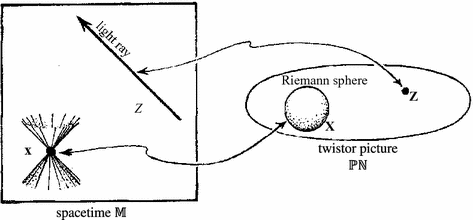Over at Dynamics of Cats, Steinn Sigurdsson has a posting on Yarn Theory, to some extent a review of Lee Smolin’s The Trouble With Physics. Steinn is an astrophysicist, but started out life as a string theorist before getting disillusioned with the subject. His account of his early career is well worth reading, doing a good job of capturing the atmosphere around 1990 at Caltech, a major center of string theory research. He was working on orbifold heterotic string compactifications, discouraged by how many there were. Not much has changed…
His general point of view on string theory is that it has led to the discovery of a family of unified theories, but that it is missing some basic principle that would tell us which is the true theory and why. He is sympathetic to Smolin’s criticisms of the dysfunctional way theoretical research is being pursued, focusing efforts on one very speculative idea and making it unlikely that people who chose to try and work on others will be able to make careers for themselves:
… a lot of people will not only not believe that this is a real problem, they will make sure nobody else believes you either. Someone out there quite likely is already on the right track to the true theory, but their odds of survival in the current academic system are not wonderful. We may just have to wait a generation or two for a good approach to be rediscovered, which is a shame, cause some of us want to know! Now!!
… [Smolin’s] points on groupthink, and the systematic bias which discourages innovation and risk taking by young researchers hit painfully home – it is all too true, and yet it self-perpetuates because the mechanisms which reinforce conservatism in science are there for reasons. The system is flawed, and possibly broken, but the fix is not as simple as Smolin suggests – funding agencies are terrified of funding bad science, since there is so much pretty good science it is safe to fund, and as a community scientists are very harsh when bad science is mistakenly given precious resources.
It is the same market flaw that gives us beautiful flawless large red apples in supermarkets – with no taste. To get the old intense flavour varieties that everyone loves when they taste, we would have to choose small bruised discoloured apples when we shop, and leave the flawless big red apples with no taste in the bins. But collectively we do not, and the market responds. All for the fear of being the one department head consumer to go home with an occasional rotten apple. The real shame is that the big red shiny tasteless apples are rotten just as often, they just look so good sitting there, waxed and sprayed, in the bin. ‘Course if you only get to buy one apple every three years you learn to be very conservative in your choice; don’t want a rotten or even tart apple this decade.
I think Steinn gets to the rotten core of the problem here. There are very good reasons for conservatism in deciding what kinds of research to encourage, but with the very difficult situation that particle physics now finds itself in, the standard mechanisms for making these decisions have led to a seriously problematic situation. There are various things one could imagine doing to help get out of this, but even getting started on a discussion of them first requires that the powers-that-be in the field acknowledge the existence of a problem, and that has yet to really happen.
On a completely different subject, there’s a new preprint by Michael McGuigan which manages to cite both Not Even Wrong (the book), and a Lubos Motl blog entry. The citation of my book seems unnecessary, surely there are other sources critical of string-based unification that have priority. The article is about the “see-saw” mechanism for getting the right magnitude of the cosmological constant, and it is for this that Lubos’s blog gets a citation. This does seem to be a more promising idea about the CC than many. I for one think it will be a wonderful development if the field of particle theory turns around, stops promoting pseudo-science justified by the Weinberg anthropic CC “prediction”, and heads instead in a more promising direction, all based on an entry in Lubos’s blog…


